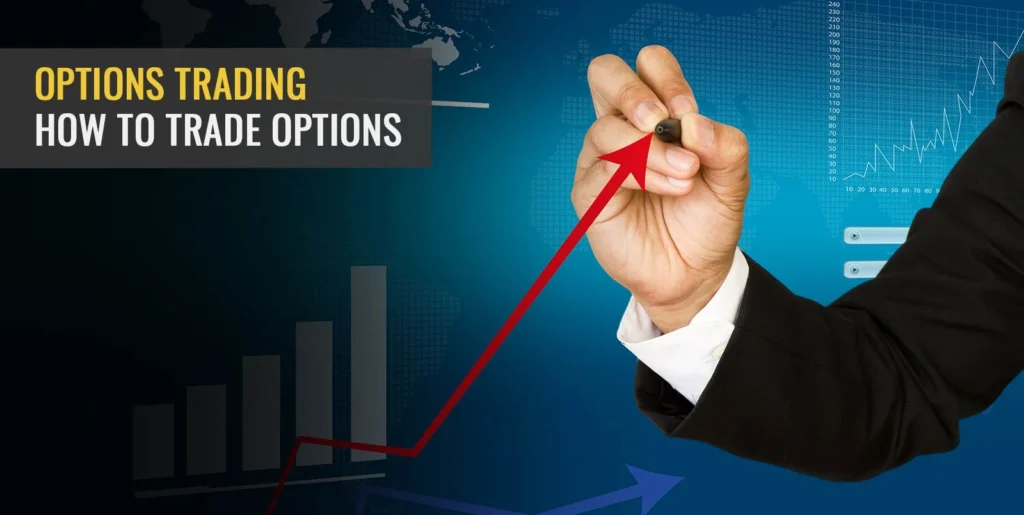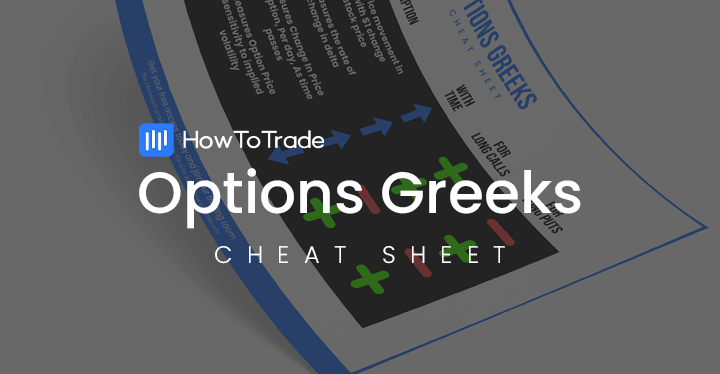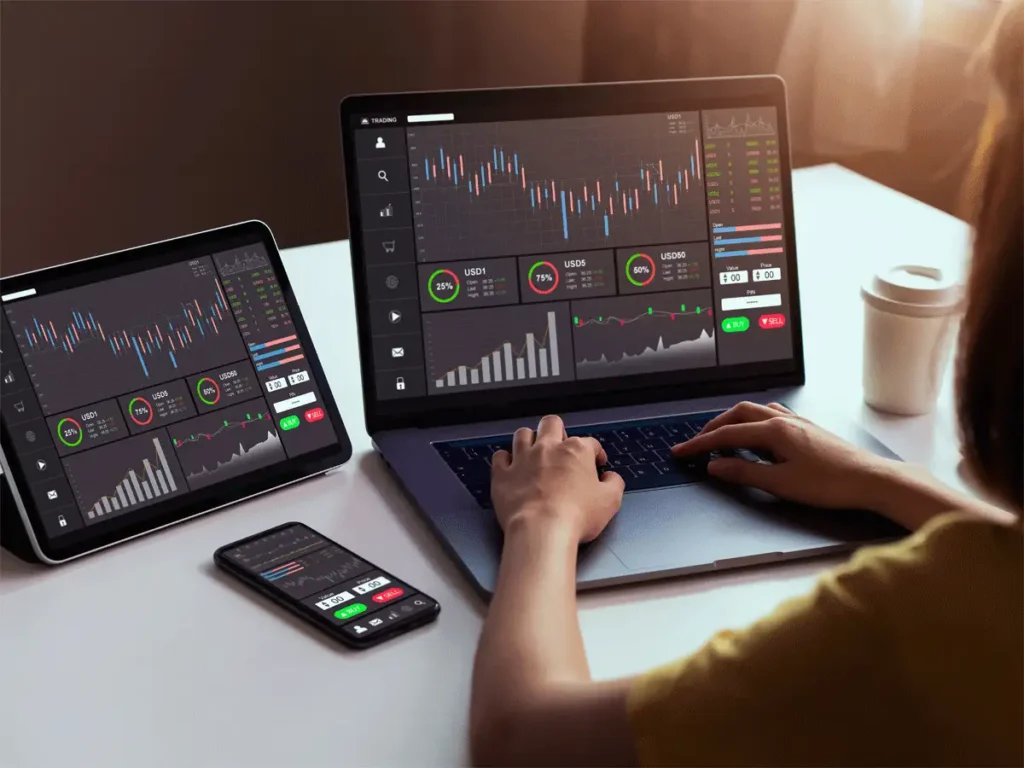
A Beginner’s Guide to Options Trading: Unlocking the Potential for Profit

Options trading offers an exciting opportunity to earn significant profits—or incur substantial losses—by leveraging financial instruments. It provides investors with tools to hedge their portfolios, while also giving speculators the chance to capitalize on price fluctuations. However, like any investment strategy, options trading comes with its own set of complexities and risks that new traders must understand before diving in. This guide is designed to help you navigate the basics of options trading, understand how it works, and provide insight into how to get started.
Key Takeaways:
- Options trading allows you to speculate on the price movement of an asset without owning it.
- Options come in two types: call options (for buying) and put options (for selling).
- Understanding the Greeks—Delta, Gamma, Vega, and Theta—can help you predict price movements and manage risk.
- Choosing the right trading platform and understanding the risks are essential for success in options trading.
Understanding the Basics of Options Trading

If you’re new to options trading, here are some essential concepts to help you get started:
What is an Option?
An option is a financial contract that gives you the right (but not the obligation) to buy or sell an underlying asset, such as a stock, at a predetermined price (known as the strike price) before the option expires. Unlike stocks, which represent ownership in a company, options are derivatives, meaning their value is based on the performance of the underlying asset.
The Two Types of Options: Calls and Puts

- Call Options: A call option gives you the right to buy an asset at a specific price (strike price) before the option expires. Investors buy calls when they believe the asset’s price will rise.
- Example: You purchase a call option for Stock X with a strike price of $50. If Stock X rises above $50, you can buy it at that price and potentially sell it for a profit.
- Put Options: A put option gives you the right to sell an asset at a set price before the option expires. Put options are used when you expect the asset’s price will fall.
- Example: You buy a put option for Stock X with a strike price of $50. If Stock X falls below $50, you can sell it at that price, making a profit.
How are Options Priced?

Options are priced based on several factors, including the price of the underlying asset, the strike price, the time until expiration, and market volatility. There are two types of option pricing:
- Intrinsic Value: The difference between the option’s strike price and the current price of the underlying asset (only applicable when the option is “in the money”).
- Extrinsic Value: The additional value based on factors such as time to expiration and volatility.
Options can be classified as:
- In the Money (ITM): When the option has intrinsic value.
- Out of the Money (OTM): When the option has no intrinsic value, and its only value is extrinsic.
- At the Money (ATM): When the strike price is equal to the market price of the underlying asset.
How Do Option Prices Change?

The price of an option (also known as its premium) changes based on several factors, collectively known as The Greeks. These are used by traders to assess risk and forecast price movements:
- Delta: Measures how much the option price will change with a $1 change in the underlying asset.
- Gamma: Measures the rate of change in Delta.
- Vega: Measures the sensitivity of the option price to changes in market volatility.
- Theta: Measures the rate of time decay of the option’s value as it approaches expiration.
Opening an Options Trading Account

To start trading options, you must open an account with a broker that supports options trading. The process typically involves:
- Account application: Fill out an application with personal and financial details.
- Approval process: Brokers will assess your financial status and experience to determine if you’re eligible for options trading. Different brokers have different requirements, such as a minimum level of income, experience, or risk tolerance.
Once your account is approved, you can start placing options trades, but it’s crucial to thoroughly understand the risks involved before making any moves.
How to Avoid Losing Money in Options Trading

Options trading can be a highly profitable venture, but it also comes with substantial risks. Here are some tips to help minimize potential losses:
- Risk management: Use tools such as stop-loss orders and limit orders to control potential losses.
- Start small: Begin with small positions until you gain experience and confidence.
- Know your risk tolerance: Understand the risks you’re willing to take and don’t exceed them.
- Have a strategy: Don’t trade based on impulse. Develop a sound strategy with defined entry and exit points.
Call and Put Options Explained

To further simplify options trading, let’s explore the mechanics of call and put options:
- Call Options:
- If you buy a call option, you’re betting that the asset’s price will rise above the strike price before the option expires.
- You can either exercise the option (buy the asset at the strike price) or sell the option at a profit if its price increases.
- Put Options:
- When you buy a put option, you expect the asset’s price will fall below the strike price, allowing you to sell the asset at the strike price for a profit.
- Similar to call options, you can exercise the option (selling the asset at the strike price) or sell the option to another trader.
Both types of options can expire worthless if the underlying asset doesn’t move in the predicted direction. However, they can also be sold to another trader before expiration for a profit if the price moves favorably.
American vs. European Options

The main difference between American-style and European-style options lies in when they can be exercised:
- American-style options: Can be exercised anytime before expiration.
- European-style options: Can only be exercised on the expiration date.
American-style options are more common in exchange-traded securities, while European-style options are typically used for index options and traded on specific exchanges.
Physical vs. Cash Settlement
Options contracts are settled in two primary ways:
- Physical Settlement: In this case, you either receive the underlying asset (with call options) or deliver the asset (with put options) when the contract expires.
- Cash Settlement: Instead of delivering or receiving the asset, the contract is settled in cash, based on the difference between the strike price and the market price at expiration. This is more common with index options.
Best Platforms for Options Trading

Here’s a list of the best brokers for options trading, based on features, fees, and services:
- Tastytrade – Best for options trading
- Fees: $0 for stock trades, $1 to open options trades (capped at $10 per leg), $0 to close
- Best For: Options-focused traders with a user-friendly interface and educational tools
- Interactive Brokers – Best for advanced options traders
- Fees: $0 commissions for equities/ETFs, $0.65 per contract for options
- Best For: Professional traders with access to advanced tools and global markets
- E*TRADE – Best for beginners
- Fees: $0 for stock/ETF trades, $0.50-$0.65 per contract for options
- Best For: New traders looking for an easy-to-use platform and strong customer support
- Webull – Best for low-cost options trading
- Fees: $0 for stock, ETF, and options trading
- Best For: Cost-conscious traders who want a no-frills platform with decent options trading capabilities
Conclusion: Start Trading with Knowledge
Options trading offers the potential for significant gains, but it also comes with risks that require careful consideration. By understanding the basics of call and put options, knowing how they are priced, and selecting the right trading platform, you can start your options trading journey with confidence. Make sure to manage your risks and continue learning as you gain experience. Happy trading!
